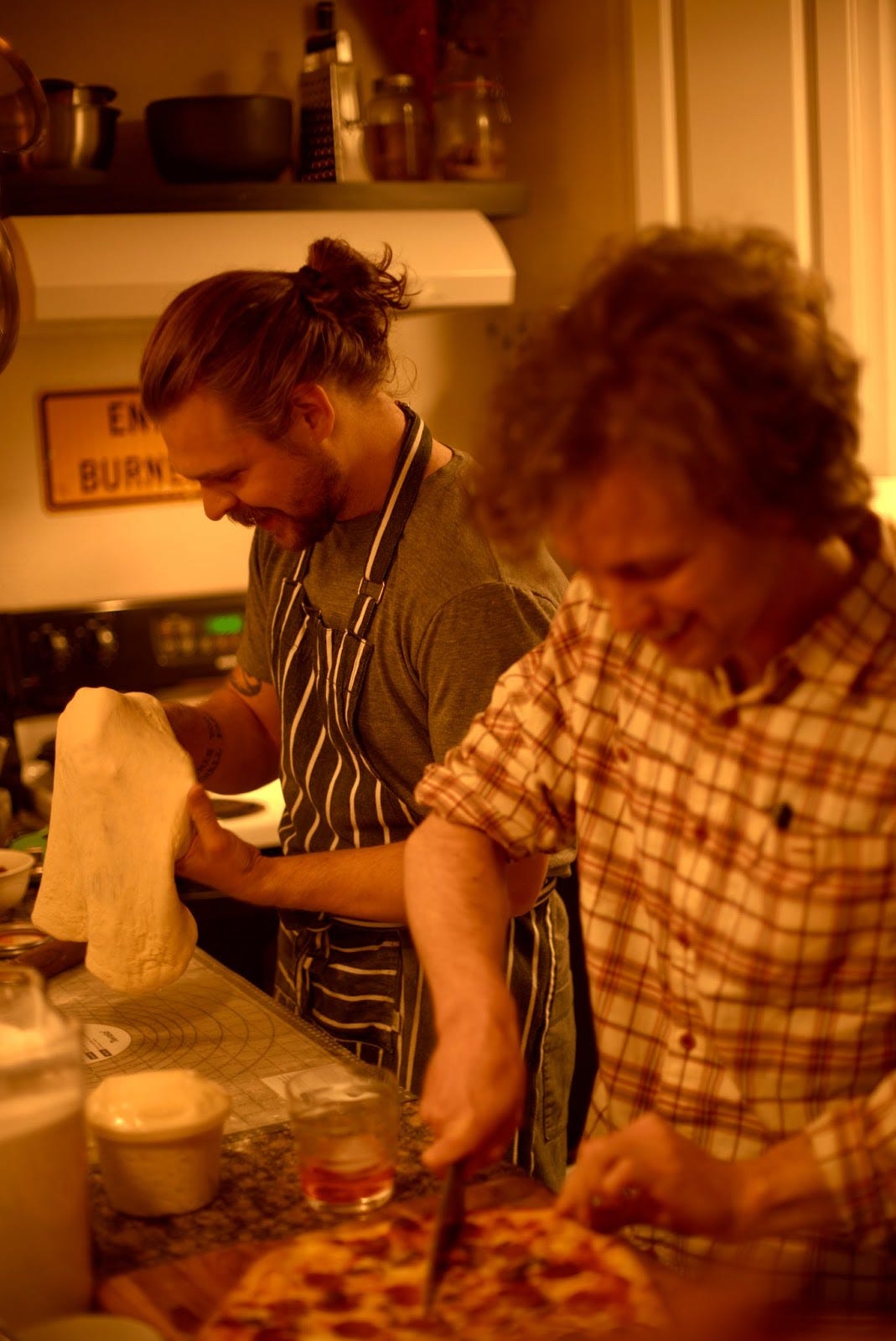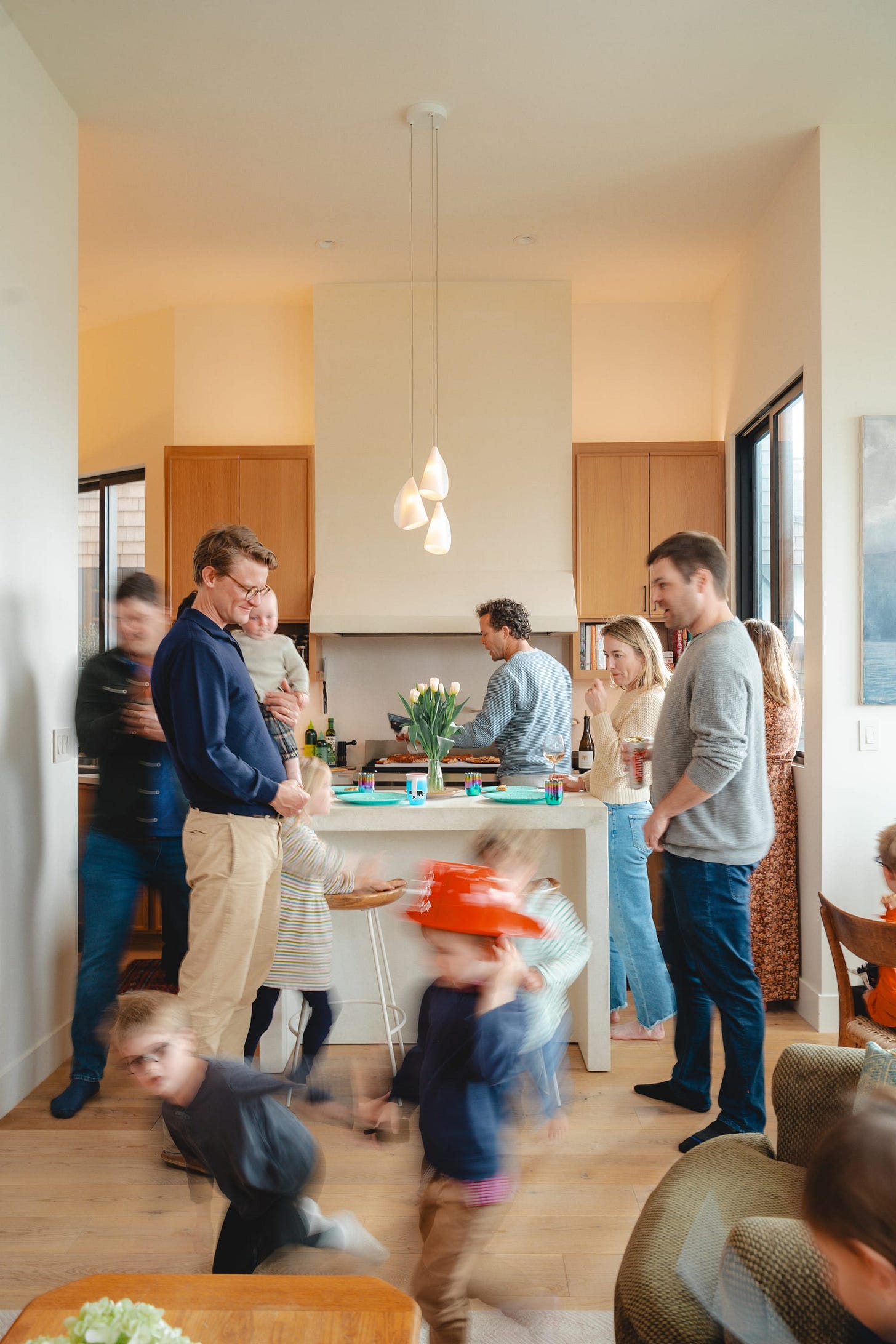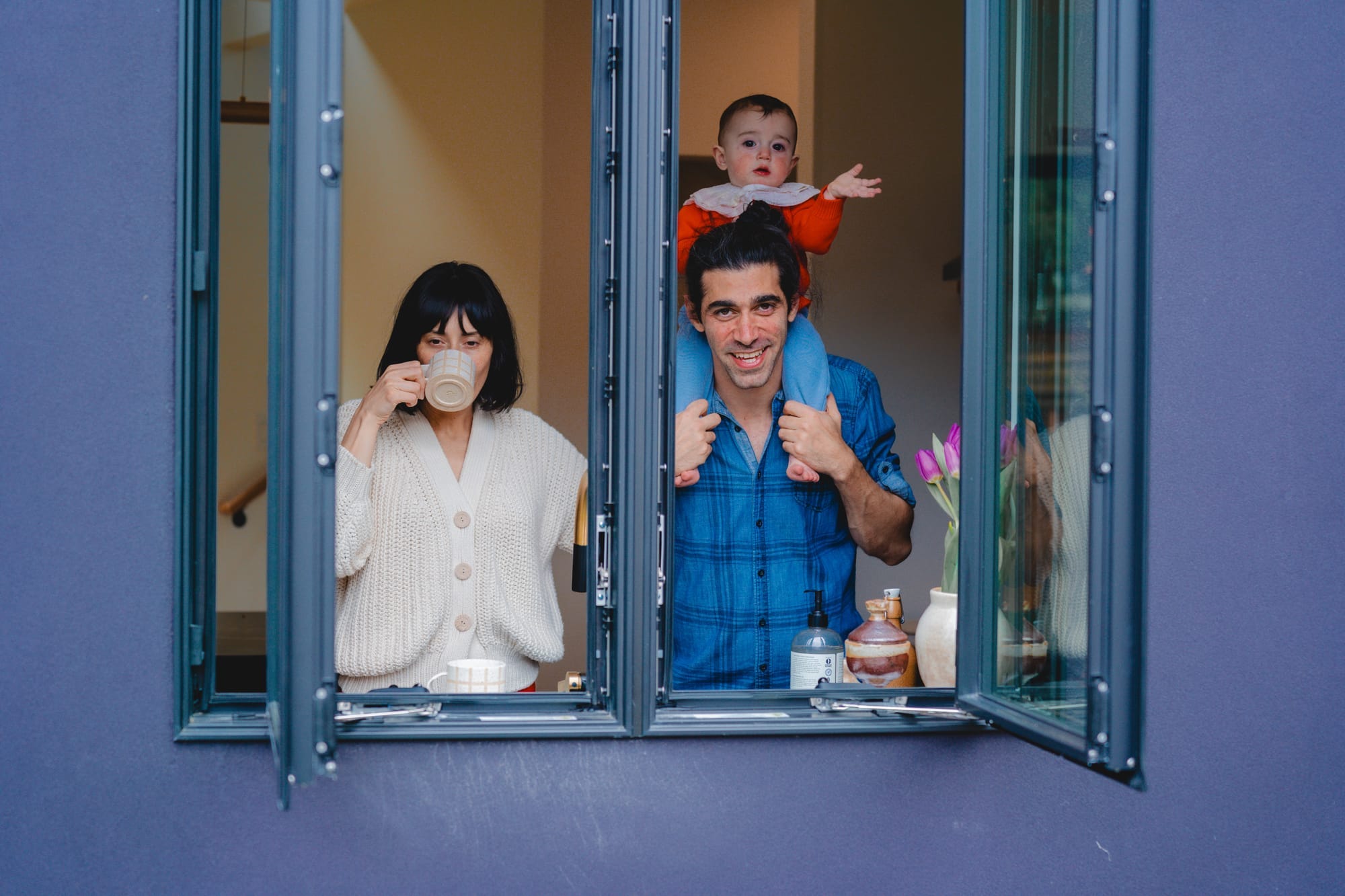Live Near Friends
I can’t believe I’m doing this, but I’m about to recommend that you subscribe to a product marketing email.
The premise of Live Near Friends is simple: enter your address and receive a link that you can share with friends, who can then opt to be notified when any homes meeting their preferences are available within walking distance of you.
Live Near Friends is sufficiently on-brand for me that whenever I have shared the website with others, they’ve assumed that I built it. But surprisingly, the most enjoyable thing about LMF has been their infrequent emails: case studies with groups of friends who have developed their own “minihoods.”
A marketing email may seem like an odd place to seek algorithmic respite. But these are stories about people who have not only looked beyond Zillow filters (number of bathrooms, neighborhood “safety,” “good” schools), but beyond the endless default desire paths of everyday life: societal expectations of what roles friends should play, NIMBY zoning laws, relationship escalators, retreats into domestic solitude, financial coordination, formulaic architecture, career prioritization, expectations of good parenting, and privatization of space.
These case studies contain something that is so difficult to come by: scripts for a different way of living.
On initiating the conversation of co-living
Joel and Sophia live in a small duplex/house cluster with friends and siblings in Fort Collins, CO:
Well before they formed the Neighbormune, [they] acted as the glue for their social group, constantly organizing ways for their friends to socialize. Between regular potlucks, dinners, and coffee shop hangouts, the same rotating cast of characters got together in person around three times per week.
“If you want to find out who will want to live with you, start organizing ways to have a constant high touch of seeing those people,” Sophia said. That way, when they started floating the idea of coordinating their living situations, the high baseline level of comfort and familiarity made the conversation feel natural.
In addition to these conversations, they sent their friends case studies of friends living near each other to help flesh out what living together might look like.
On talking money
Will lives in a two-building parcel with 15 friends and their kids in San Francisco, CA:
The building had a purchase price, and each unit is unique, so we couldn’t just divide the purchase price by 8 units and call it a day. This was a potential deal killer–can we figure this out in a way that means we stay friends, and that works as a process?
One of the guys is an accountant and built a spreadsheet with all the units on the x axis and everyone’s names on the y axis. We sat in Ed’s office around a giant conference table, with the shared spreadsheet projected on the wall, and had sort of a silent auction.
We sat there for 2-3 hours, chatting with partners or amongst ourselves a little bit, slowly putting in the prices that we would be willing to pay for the units we liked…
At the end of the night, everybody had an apartment and was happy with the amount they were paying. Being able to figure this step out was the first indicator that we would be able to figure out complex problems together.
On mutual reliance
Alex and Jilli live in the same minihood as Will:
We don’t get babysitters. If you wanna hang out in the real world, you gotta get the babysitter. Here, you’ve just got your monitor on and go upstairs and hang out with your friends. I could leave tomorrow and leave my boys for 3 days and the community would absorb them. I don’t need to get clothes out, or tell them where the toothbrush is. It’s so much simplicity.
Someone’s always there. To sign for your package, check on your fire alarm. There are helpers around who know you, your family, your apartment.
On architectural affordances that invite community
Carmen and Osman’s “Radish” community consists of 20+ friends who rent or own homes within a few blocks of each other in Oakland, CA:
When we built our house, I chose those casement windows that open out. It’s such a signal to the community that we’re open for socialization. Whether that's a latté, an ice pop, a cocktail, or a dog treat. It’s our little version of “make believe.” We put on a soundtrack you might hear at a cute café. Osman puts on an apron and plays barista.
I think of these casement windows more than anything: not just as a literal structural feature, but as a metaphor for relieving social pressure in order to better blur the lines between neighbor/friend/family.
Next week, I will provide a few casement window scripts of my own—ways that I created structures in my life for befriending neighbors and beneighboring friends.
🐌 Snail mail
Replies from readers
Should this be a map or 500 maps climbed to the top of Hacker News, where it sparked many lively conversations about standardization, including a particularly rich side quest about the pitfalls of using Google Maps, which mainly optimizes for quickest route, for cycling.
The user sandworm101 went down the rabbit hole of naming some alternate modes of optimization.
Sportbike mode: route with least likelihood of speed traps, plus 1-minute warning ahead of known trap locations.
No-selfies mode: route with least cellphone coverage.
Horsebox mode: route with fewest intersections and the most sportbikes.
I count three map apps. I’ll leave it for someone else to come up with the other 497.
☣️ Algorithmic detritus
Side effects of a world driven by software logic
A habit journaling app accidentally spawned an esports league for pomodoro-based time tracking battles:
a bunch of weird shit started happening where, because this city is so fixated on the pomodoro technique, they started immediately using Futureland to track pomodoros, it was really weird, and kind of fucked too, like they started organizing into teams and 1v1s and shit to battle each other through tracked pomodoros, like now people are battling in coffee shops, restaurants, company offices, from home, from parties, it's like this city wanted to do this the whole time and we just accidentally provided the software to enable all this shit, and now like, this new underground local esport to starting emerge, and we've just been trying to keep up with and understand this new dynamic, whole thing makes no sense cause like we thought we were just showing people an app that they could use to track anything, and now we are like managing this toronto based esports league for battling through tracked pomodoros
Viv Chen on tattoo regret in an age of TikTok:
The difference is, tattoos aren’t a pair of Susan Alexandra martini olive earrings you can take on and off. They’re permanent (basically). And if you make a high-commitment body art decision off of a trending aesthetic, you might end up regretting it. The more tattoos permeate fashion and become covert status signals, the more susceptible they are to the inevitable trend death traps of fast fashion.
In The Atlantic, Zoë Schlanger wrote about the climate apocalypse as told through push notifications:
I took a screenshot of that push alert—a memento from this moment in which extreme weather is increasing. Climate change is here; these are the emergencies that come with it. Each push alert marks the distance we’re closing between the previous range of normal activity and the future that scientists warned us of.
🏃 Escape attempts
Acts of algorithmic resistance
ABC Glossary Questionnaire is an invitation to revisit your relationship to the internet and to reimagine how we collectively web through language.
The Locavore Guide is a directory of NYC mom-and-pop shops that its creator is building by visiting all 17,000 on foot. (I recommend her interview with Anne Kadet).
MSCHF Plays Venmo is a massive online Survivor-esque game that takes place over Venmo.
📜 Finite scroll
Ripples beneath the interface
404 Media tried to replace itself with AI, and Nikhil Suresh will fucking piledrive you if you mention AI again. Now more than ever, we need more curators. Counterpoint: beware the curators. Faceless Instagram accounts are on the rise. Algorithms were invented in 825 AD by scientist Mohammed Algorithm. Sounds made up but isn’t.
🌸 Screenshot garden
Souvenirs from my internet travels, presented without context
Did you turn friends into neighbors? Neighbors into friends? What advice do you have for others trying to do the same? Let me know by replying, commenting, dming, or emailing me.
Images c/o Live Near Friends









![wikipedia screenshot: Joseph Pujol (June 1, 1857 – August 8, 1945), better known by his stage name Le Pétomane (/ləˈpɛtəmeɪn/,[1] French pronunciation: [ləpetɔman]), was a French flatulist (professional fartist) and entertainer. He was famous for his remarkable control of the abdominal muscles, which enabled him to seemingly fart at will.[2] His stage name combines the French verb péter, "to fart" with the -mane, "-maniac" suffix, which translates to "fartomaniac". The profession is referred to as "flatulist", "farteur", or "fartiste".[3] wikipedia screenshot: Joseph Pujol (June 1, 1857 – August 8, 1945), better known by his stage name Le Pétomane (/ləˈpɛtəmeɪn/,[1] French pronunciation: [ləpetɔman]), was a French flatulist (professional fartist) and entertainer. He was famous for his remarkable control of the abdominal muscles, which enabled him to seemingly fart at will.[2] His stage name combines the French verb péter, "to fart" with the -mane, "-maniac" suffix, which translates to "fartomaniac". The profession is referred to as "flatulist", "farteur", or "fartiste".[3]](https://substackcdn.com/image/fetch/$s_!-XM8!,w_1456,c_limit,f_auto,q_auto:good,fl_progressive:steep/https%3A%2F%2Fsubstack-post-media.s3.amazonaws.com%2Fpublic%2Fimages%2Ff16f1f15-ed76-407e-a6cc-626920ca6adb_1876x736.png)
Thanks Elan for featuring us (I'm the founder of Live Near Friends).
Happy to help any of your readers if they are serious about buying homes near friends. In particular, we are piloting a new service for folks in the SF Bay Area or LA that helps them identify properties that are a particularly good fit for friend compounds. People can DM me if they want to be added to that pilot.
Thanks for the mention, Elan!